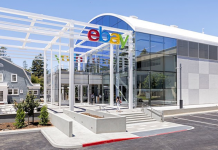Tom Konrad CFA
 Heavy duty transit bus manufacturer New Flyer Industries (NFI.TO/NFYEF.PK) released its fourth quarter earnings and annual report on March 21, quickly followed by analyst downgrades from CIBC and Canacord Genuity.
Heavy duty transit bus manufacturer New Flyer Industries (NFI.TO/NFYEF.PK) released its fourth quarter earnings and annual report on March 21, quickly followed by analyst downgrades from CIBC and Canacord Genuity.
Too far, too fast
Over the next few days, the stock fell from over $8 to below $7, although it is still well above the level where followers of my Ten Clean Energy Stocks for 2012 would have purchased ($5.65) even after dividend payments worth $0.22. After a rise like New Flyer has had over the last three months, some investors took the opportunity to get out now that it looks like any improvement in the heavy duty transit bus market will take longer than they had hoped.
Transit Bus Market
The US market for transit buses continues to be weak. While North American bus ridership is at its second highest level since 1957 (the highest being during the 2008 gas price peak), The transit bus market remains dismal, mostly due to tight municipal budgets in the US and continued uncertainty surrounding the Transportation bill currently being held up in the US House of Representatives.
While New Flyer has been able to maintain production rates because of their strong backlog, several competitors have idle capacity, and have been bidding very aggressively to keep that capacity active. Rather than bidding aggressively in response, New Flyer is instead reducing its backlog in order to maintain production rates. Over the coming year, management expects to maintain production without aggressive bidding by continuing to reduce their backlog, even to the point of producing some buses ahead of schedule
While in the long term, the aging US fleet and increased bus ridership should lead to a resurgence in demand for new, the current competitive climate is likely to lead to near term consolidation among the five major players (Gillig Corporation, North American Bus Industries (“NABI”), Orion and Nova Bus are the other four.) New Flyer has the largest market share, at 35% of new deliveries in 2011, up from 34% in 2010, most likely due to the idled capacity at other manufacturers. One other bright spot is the shift towards clean propulsion buses (mostly hybrid and compressed natural gas), which made up 68% of New Flyer’s sales in 2011. These buses have higher margins than conventional diesel buses.
Transport Bill Held Up
The current weak state of the bus market is compounded by political uncertainty.
The US Transportation bill needs to be renewed by March 31st to avoid a halt of road work and other federal transportation programs, such as subsidies to municipal transit authorities towards bus purchases. As of March 26th, Congress looked more likely to pass a short-term stop-gap measure, although even that stop-gap is in doubt, with each party maneuvering to blame the other for its failure.
While President Obama and Democrats are touting the job creation benefits of investing in transportation infrastructure (which include jobs in public transit and bus manufacturing,) Republicans in the House are objecting that the Senate version of the bill does not “address the issue of rising gas prices.” House leader John Boehner (R) wants to include provisions opening up more federal lands for oil drilling. Bohener’s position is disingenuous (increasing drilling will not significantly affect gas prices, since oil prices are now set mostly on the demand side, not the supply side.) Instead, if Congress wants to address the pain Americans feel from rising gas prices, the most effective policy measures they can take are increasing support for public transit and other alternative transportation which allow Americans to get around without using as much gas as they do in cars. Endangering current support by putting the Transportation bill in question is a step in the wrong direction.
If no bill or stop-gap measure is passed, we can expect a further fall in New Flyer’s stock price, but Congress reaches a useful agreement this week, we can expect a quick rebound.
Conclusion
I expect at least a stop-gap transportation bill to pass this week, which should help stabilize New Flyer stock. In the longer term, we should expect to see consolidation in the transit bus industry, as well as an industry rebound, as higher ridership and an aging bus fleet compels transportation authorities to find the funding to order replacement buses. In terms of consolidation, New Flyer is more likely to be an acquirer than to be acquired. The recent annual report if full of references to how the recent share restructuring “provides the flexibility needed to pursue strategic opportunities for continued long-term growth and diversification.”
Given that other bus manufacturers are currently in deeper distress than New Flyer, I expect that if they make an acquisition, it will be at an attractive price.
DISCLOSURE: Long NFYEF.
DISCLAIMER: The information and trades provided here are for informational purposes only and are not a solicitation to buy or sell any of these securities. Investing involves substantial risk and you should evaluate your own risk levels before you make any investment. Past results are not an indication of future performance. Please take the time to read the full disclaimer here.







You were right about the stop-gap transportation bill. A long-term bill that supports transit (why does one that makes it a priority seem too much to ask?) would do a lot to create certainly in the market.
New NPR story on buses here:
http://www.npr.org/2012/03/29/149625725/op-ed-hate-the-bus-its-time-to-reconsider
That was interesting. I liked his ideas about branding bus lines (the green line, etc.) and making bus maps more like subway maps.
I am optimistic about investing in buses. They are unpopular (so lots and lots of potential for growth) but that is slowly changing. Much can be done and is being done to improve bus transportation.
Here is an op-ed on how support for public transit (and there is a southeast MI regional transit plan with political support ) is growing in hostile territory: Michigan
http://www.mlive.com/business/index.ssf/2012/04/environment_for_support_of_pub.html
The competition is now reduced!
Production of Orion transit buses to wind down after fulfillment of current orders.
http://www.marketwatch.com/story/daimler-buses-reconfigures-operations-in-north-america-2012-04-25